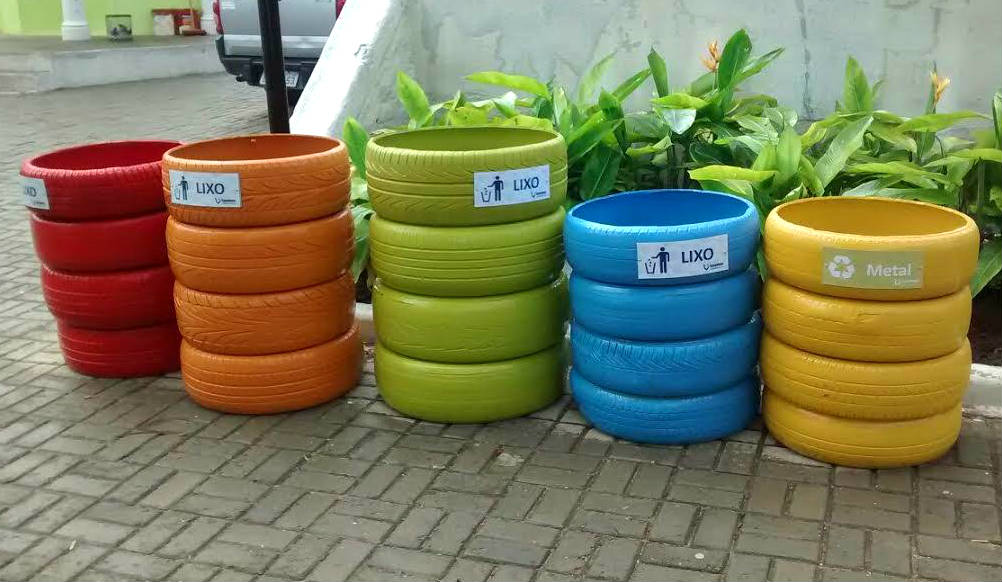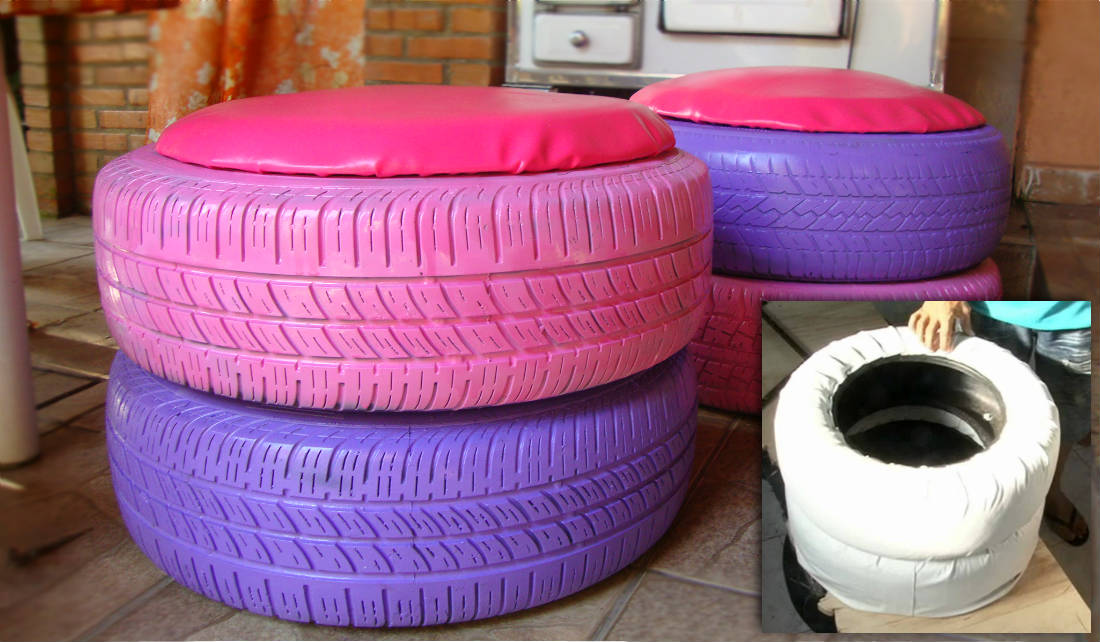Anúncios
Reusing materials is one of the most effective practices for promoting sustainability and recycling. A simple and effective example is making trash cans out of used tires. This project, in addition to contributing to reducing waste, also helps raise awareness in the community about the importance of caring for the environment.
In this post, we will discuss how you can transform old tires into a functional trash can, following the step-by-step guide developed by professor and biologist Nilson Rocha.

Materials Needed for Making
To start creating your trash can, you will need to gather some essential materials. Each trash can will be made up of four standard 13 or 14 inch tires. These tires are the most easily found and, by using them, you will be helping to reduce the number of tires that end up in landfills. In addition to the tires, you will need wire, which will be used to tie the tires together, and synthetic enamel paint or oil paint in the colors of your choice. To raise environmental awareness, we suggest that you follow the standardized color scheme for recycling, which will make it easier to separate waste.
In addition to the main materials, you will need some work tools, such as pliers and a drill. These items will help you assemble and secure the trash can. You will also need gravel and sand, which will serve as weight and support, preventing the trash can from being knocked over by physical or natural agents. The gravel will also act as an ecological filter, acting as a drain and preventing water from accumulating.
Step by step
With all the materials in hand, it's time to start assembling your trash can. The first step is to remove the sides of the tires. This step is important, as the sides can be used for other recycling projects, or sent for specialized recycling. After that, tie the tires together on the inside using wire, ensuring that they are well secured.
On the last tire, leave one of the sides intact, as it will serve as the base for the trash can. This will give greater stability to the final product. The trash can will be almost finished, but it still needs to be painted, which will be the final touch to the project.
Preventing Water and Mosquito Accumulation
To ensure that the trash can does not become a source of water accumulation, which can lead to the proliferation of the dengue mosquito, it is essential to make holes in the bottom of each tire, on the part that will be in contact with the ground. These holes will allow rainwater to drain away, preserving the recyclable materials that will be deposited in the trash can and keeping the environment safe and healthy.
After making the holes, add a layer of gravel to the bottom of the bin. This material will help the water drain, acting as a natural filter. Then, add a layer of sand, which will serve as weight and support, ensuring the bin’s stability, even in adverse weather conditions.
Customization and Painting
Now that the trash can structure is ready, it's time to customize it. Painting is an important step because, in addition to protecting the tires, it will give the final product a more pleasant appearance. You can use synthetic enamel or oil paint, in the colors of your choice. However, we recommend following the standard colors for recycling, making it easier to identify the types of waste that can be disposed of in the trash can.
When painting your trash can, avoid using the word “trash” in your decoration. The word “trash” carries a connotation of something without value or use. Instead, opt for words like “recycling” or “separate collection,” which encourage reuse and environmental awareness.
Benefits of Reusing Tires for Recycling
Creating recycling bins from used tires is an effective way to promote recycling and reuse of materials that would otherwise be disposed of inappropriately. Tires left in landfills or dumps represent a major environmental problem, as they take many years to decompose and can become breeding grounds for diseases such as dengue fever.
By turning old tires into recycling bins, you are not only contributing to reducing waste, but also creating a product that is of great use to the community. These bins can be installed in parks, schools, and other public places, helping to keep the environment clean and raising awareness about the importance of recycling.
How to Get More Involved in Tire Recycling
If you’re interested in this project and want to learn more about tire and rubber recycling, there are many ways to get involved. You can attend workshops and courses that teach recycling and reusing techniques, or even start your own tire collection and recycling project in your community.
Professor Nilson Rocha, who prepared this step-by-step guide, is available to provide more information about the project and how you can implement it in your region. He can be contacted via email or phone to answer questions and provide additional guidance.
Final Considerations on the Importance of Recycling
Recycling is an essential practice for preserving the environment and promoting sustainability. Projects such as creating tire recycling bins are examples of how small actions can make a big difference. In addition to reducing the amount of waste that ends up in landfills, these projects promote environmental awareness and encourage others to adopt sustainable practices in their daily lives.
Turning old tires into recycling bins is a simple and effective way to contribute to a more sustainable future. By following the steps outlined in this post, you’ll be taking an important step in the right direction, helping to create a cleaner, healthier environment for everyone.
Learn how to make other arts by recycling, Click here.
Check out interesting facts about recycling clicking here.




